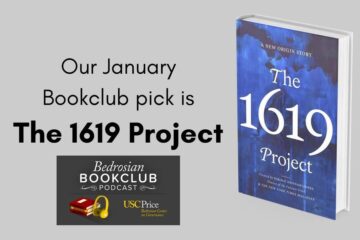PEPL at the intersections of politics, economics and the law
by Janna Rezaee
This past June, I co-organized the Political Economy and Public Law (PEPL) conference here at USC with my colleague, Abby Wood. The goal of this small conference is to strengthen the connections between legal scholars and social scientists doing work at the intersection of politics, economics, and law.
This was the tenth annual PEPL conference. Prior to USC, PEPL has been held at Cornell, New York University, University of Rochester, Washington University in Saint Louis, University of Virginia, Harvard, Stanford, and the University of Chicago.
The “founders”of PEPL—at the time junior scholars themselves—set a powerful example by creating a community specifically to support junior faculty in academic growth. A community where none had existed before. This conference was not started by a professional organization or department chair. It was not started by senior faculty. It was convened at the grassroots by junior faculty seeing a need to bring a group of scholars together.
Ten years later, PEPL is a bit more formal and more institutionalized. The conference remains geared toward supporting junior scholars and new juniors join the fold each year. I joined four years ago.
PEPL has become much more diverse over the past decade. Participants today include more women and minorities than in the past. This diversity holds the promise of making us more creative, diligent, and hard working, in addition to helping to remedy the gender and racial imbalances across the social sciences and law.
I would say PEPL has also become much more interdisciplinary over time. For me, the primary appeal of PEPL is its interdisciplinarity. PEPL brings together scholars interested in politics, economics, and law—regardless of their “home” academic field. PEPL also fosters an interplay between theoretical and empirical researchers, who are often quite divided from each other in their work. I see this unfortunate divide as a social science version of the divide in science between basic and applied research. According to Venkatesh Narayanamurti, Benjamin Peirce Research Professor of Technology and Public Policy and a Professor of Physics at Harvard, and a proponent of interdisciplinarity, some of the world’s most important inventions were made not by basic scientists and applied scientists working sequentially in isolation, but by scientists who teamed up, sharing ideas and insights and even sometimes switching roles.
I suspect that some of the most important future contributions to important topics at the intersection of politics, economics, and law will be made by interdisciplinary empiricists and theorists who work together, share insights, and perhaps even switch roles. PEPL offers a space and an opportunity for this sort of collaborative creative work.
By now most agree that interdisciplinary research is a good thing. Nature’s special issue on interdisciplinarity is a case in point.
The conversation these days has moved on to the realities, and especially the challenges, of actually doing interdisciplinary research. As Felicity Callard and Des Fitzgerald, authors of Rethinking Interdisciplinarity, put it in the aptly titled article, “Why it’s time to get real about interdisciplinary research,” “It isn’t straightforward to describe the nitty-gritty of how you actually meet people, get hold of money, and do things together. It isn’t comfortable to move beyond joyful accounts of harmonious collaboration, to describe the strange, unequal and sometimes fractious rhythms that can also hold people together.” As in other interdisciplinary settings, PEPL needs to contend with differing levels of access to power, influence, and money among scholars.
It is my hope that PEPL will become even more interdisciplinary over time. I look forward to “getting real” about the challenges that this brings, and to being a part of fostering interdisciplinary collaborations at the intersections of politics, economics and the law.



